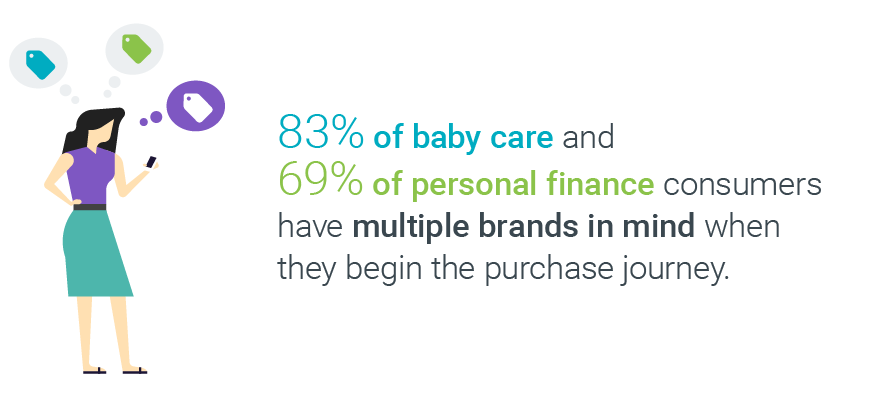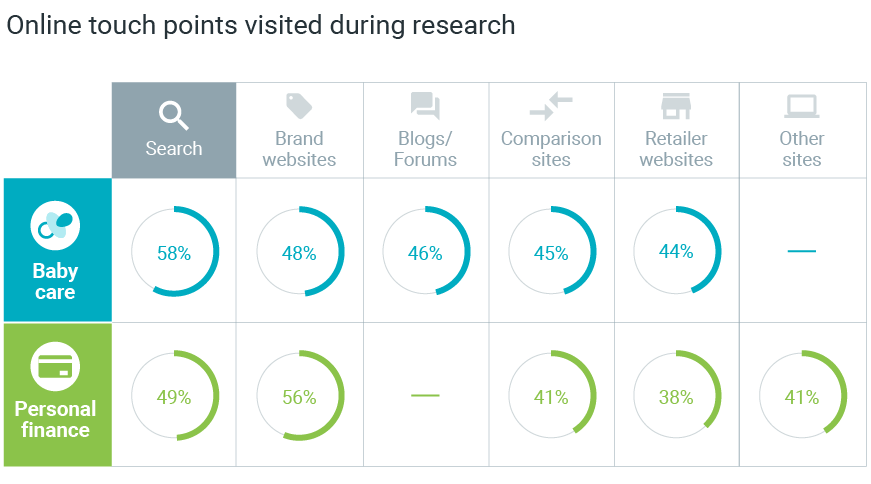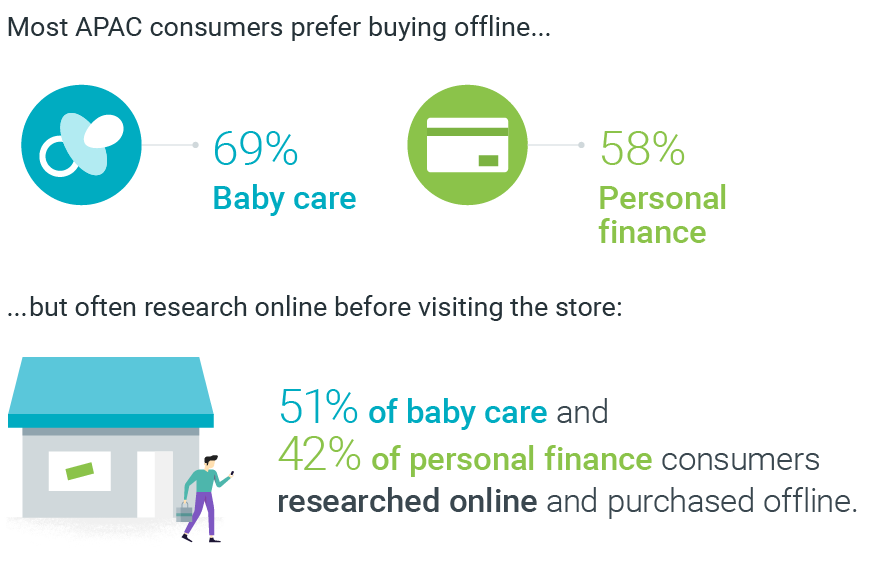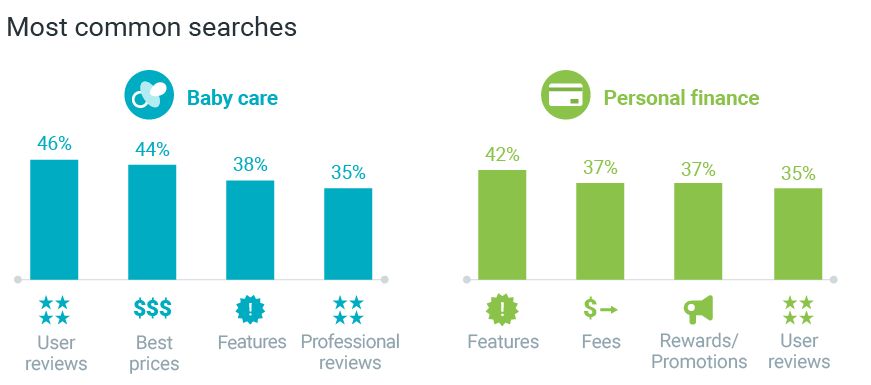Mobile has changed the way APAC consumers make decisions. As they turn to their phones to research and make choices throughout the day, brands have more and more opportunities to connect with them. Our latest research—a survey covering 26,000 respondents, 17 industries, and 14 countries—shines a light on the significant role search plays along the path to purchase.
It’s no secret that smartphones are incredibly popular in APAC. Smartphone penetration is greater than desktop penetration in all countries across the region, and people turn to these devices in their pockets for everything—from finding useful information or searching for nearby stores to shopping or learning something new.
How can brands win the moments when consumers turn to their phones to do all of this? Start with online search. Our findings from recent research with Kantar TNS paint a fascinating picture about the role search plays along the customer journey, revealing it as one of the most influential and commonly used sources of information.
We looked at two very different industries: baby care (a routine purchase category) and personal finance (credit cards and personal loans—an infrequent purchase category) and found three key consumer trends common to both.
Three insights into how APAC consumers research and make decisions
Insight #1: The consumer's mind is a competitive space
When they start out, 83% of baby care shoppers and 69% of personal finance consumers have multiple brands in mind. In fact, they have as many as three brands in mind when they first start thinking about buying a product. But consumers are willing to listen. Even amongst those who have a preferred brand in mind, 30% baby care shoppers and 23% personal finance shoppers are open to new brands.

However, first impressions last. Usually they end up purchasing one of the first three brands they consider (86% for baby care and 77% for personal finance).
Insight #2: Consumers actively look online for information around your category and brand
Armed with information throughout the entire purchase journey, APAC consumers go the extra mile to make the best decisions possible. In the personal finance category, just under two-thirds of consumers conduct research before they buy, and around seven in ten do so in the baby care category (despite it being a routine purchase category).
Where are consumers doing this research? More than eight in ten APAC consumers research online, mostly on smartphones. APAC consumers are better informed than ever before, with baby care consumers using 6.4 sources of information and financial services consumers using 5.2. For both categories, the number of online touch points outweighs the number of offline touch points, with search being the most commonly used source of information for baby care consumers and the second most commonly used source for personal finance consumers.

Insight #3: Before they head to the store (and even when they’re in the aisle), consumers research online
Online research is driving offline sales. Our research showed that the majority of APAC consumers still prefer buying in store (69% for baby care and 58% for personal finance). But our data also revealed that many of these consumers had conducted research online before they converted in store (51% for baby care and 42% for personal finance).

Even once they’re in the aisle comparing options, APAC consumers are on their smartphones, conducting research. Our data shows seven in ten buyers research online while in stores, consulting their smartphones in the final stages of the purchase journey.
A spotlight on search
Consumers in APAC want the best, and search helps them find it. Search not only helps people find what they want in the moment, but it also gives them new ideas and introduces them to new brands. Here are six insights from our research into how search helps consumers along the entire customer journey.
1. You can’t spell “research” without “search”
Search is not only a heavily used source of information, but it’s also highly influential. Search tops the list of most influential online information sources for almost 88% of baby care and 87% of personal finance consumers.
2. Search unlocks consumer curiosity
As with those famous potato chips, consumers can’t stop at just one search. While researching and deciding what to buy, they keep searching until they’re comfortable with their decision. In both categories, consumers conducted an average of six searches before buying. Put another way, that’s six opportunities for brands to engage.
3. Search queries reflect consumer intent
Consumers want information about everything to do with a topic, not just a specific product or brand. Baby care consumers looking for diapers for sensitive skin or personal finance consumers researching best rewards credit cards want to be experts before they consider making a purchase or signing up.
We found that the most popular searches are for broad categories, such as features, prices, and reviews.

4. Search connects intent and action
Search doesn’t just reflect what consumers want. It also helps them act. For 29% of baby care consumers and 22% of personal finance consumers, acting means visiting a store right after they conduct a search. Some consumers immediately make a purchase online: 26% of baby care and 34% of personal finance consumers buy a brand right after they search. Six in ten (63% of baby care and 60% of personal finance) consumers continue to do further online research. Search also acts as a gateway to brand websites, with around a third (34% personal finance and 32% baby care) of consumers using search to find them.
5. Search supports brand building
Consumers are not only acting based on what they find in search; they’re also discovering new brands. Search is the top source of brand awareness for baby care consumers, followed by blogs and forums, comparison websites, social media, and retailer websites.
6. Search plays an important role all along the path to purchase
Consumers are searching right up to the checkout. Across both categories, nearly one quarter of consumers use online search in store.
Winning customers starts with search
To meet (and hopefully exceed) today’s increasing consumer expectations, brands need to reach them with marketing messages that are tailored to their needs. Search is critical in delivering the right message at the right time.
An example of a brand successfully capturing consumer intent early on is Japan’s H.I.S.. The travel agency realized that when prospective travelers first start dreaming about their next trip, they usually turn to their smartphones for inspiration and information. They begin by heading to search to find out more about popular destinations, using queries such as “islands to visit in January” or “best Hawaiian islands.” H.I.S. wanted to influence potential customers from the time they start thinking about taking a holiday, so they used dynamic search ads and automated bidding to serve ads across all stages of trip planning. Doing so helped reach users throughout the customer journey, thus boosting conversions.
If, like H.I.S., businesses want to figure out how to not only influence consumers but also help them along the entire purchase journey, search is proving to be a great way to cut through the complexity of today’s fragmented media landscape. Search helps brands connect with consumers as they raise their hands, look for help online, and research more than ever before—not just for a specific product or brand but for help with the whole process. Brands with a holistic view of the path to purchase can influence consumers from the moment they start thinking about making a purchase to when they’re in the aisle, searching on their smartphones.
For more information, explore the entire personal finance and baby care studies conducted by Google and Kantar TNS.
Methodology
Google partnered with Kantar TNS Australia on custom research to uncover insights about user behavior, including attitudes toward pre-purchase research, triggers for purchase, sources of information, and use of media in the research journey. In March 2017, an online and offline survey was conducted across buyers from 17 different product categories across 14 countries in APAC. This report includes results from two of those categories: (1) 6,651 users aged 18–64 who bought baby care products in the past month and (2) 6,412 users aged 18–64 who signed up for a credit card or a personal loan in the past 12 months.






